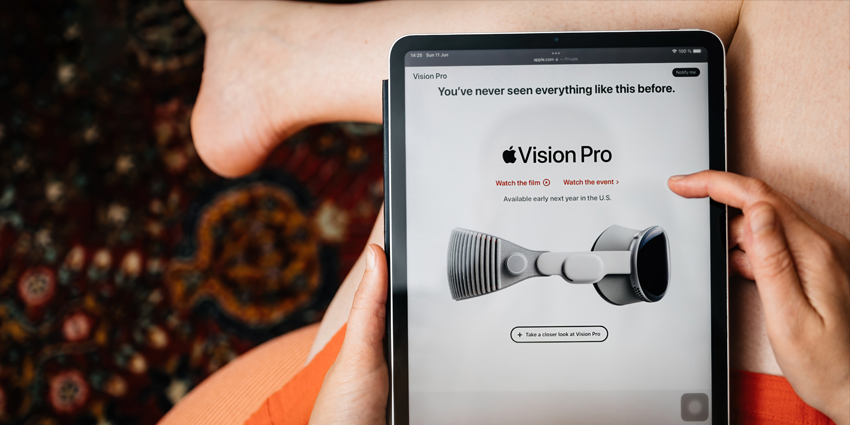Recently, from information presented in Mark Gurman’s Power On newsletter, rumours have circulated regarding a lower-priced Apple Vision Pro MR headset.
After years of rumours and speculation, Apple debuted the Vision Pro earlier this year. Despite initial interest and impressive specifications, the $3,499 price tag turned many potential customers off the device.
Moreover, since the Vision Pro’s debut, some observers have stated that the device is failing in its goals of launching spatial computing in the mainstream. However, early device adoption may not reflect the Vision Pro’s lifetime success.
In the recent newsletter, Gurman stated that Apple will debut a lower-priced MR headset but will still be more expensive than other marketplace competitors at no lower than $1,499.
Gurman also claims that Apple’s XR development groups are working on a cheaper spatial computing device, a second-generation Apple Vision Pro model, and a pair of more straightforward smart glasses. Gurman noted that the experimental devices will launch as early as next year.
Further rumours surround the device. However, Apple is yet to confirm any information regarding new XR products.
This news comes after Apple debuted the Vision Pro internationally in various new regions, such as the United Kingdom, China, Japan, Singapore, Australia, Canada, France, and Germany.
Will MR Headsets and AR Smart Glasses Overtake VR Headsets?
ResearchAndMarkets recently published its “Smart Augmented Reality Glasses—Global Strategic Business Report,” which examines the market’s growth potential for smart glasses. The report stated that the global market for smart glasses reached approximately 678.6 thousand units in 2023 and is expected to grow significantly to 13 million units by 2030, with a compound annual growth rate (CAGR) of 53.0 percent.
The smart glasses market grew to around 432.3 thousand units in the US in 2023. Regionally, ResearchAndMarkets predicts a 62.5 percent CAGR in the Chinese market, with 613.3 thousand unit shipments by 2030.
ResearchAndMarkets also examined broader hardware considerations in the smart glasses market, including “simple assisted reality glasses,” forecasted to reach 5 million units by 2030 with a CAGR of 50.3 percent. Additionally, the report notes that MR holographic displays, such as Apple’s Vision Pro, are expected to grow at a 58.4 percent CAGR until 2030.
Meanwhile, in a recent report, IDC highlighted a sharp decline in global shipments of AR/VR headsets in the first quarter of 2024, with a 67.4 percent year-over-year drop. This decline primarily affected VR headsets, as potential customers are shifting towards MR/AR devices.
Ramon T. Llamas, a Research Director with IDC’s Augmented and Virtual Reality Team, explained that Apple Vision Pro influenced prices for the overall MR headset market, while lower-cost devices from brands such as Meta and HTC are making MR hardware more financially accessible.
Meta led the market in Q1 of 2024 with its popular Quest portfolio, and the report showed that Apple quickly advanced to become the second top-selling vendor, overtaking industry veterans such as ByteDance, Xreal, and HTC.
With IDC forecasting a 43.9 percent CAGR in headset shipments from 2024 to 2028, the market could see an increase in volume due to the expected decrease in entry-level MR headset prices and buyers’ transition from VR to MR/AR devices.
Looking at the forecasts from IDC and ResearchAndMarkets, it’s apparent that the interest in Apple’s new MR and smart glasses products aligns with the growing market trend. However, it’s important to note that the industry will need to work hard to sustain interest in XR headsets and spatial computing with the arrival of new headsets between now and 2025.







